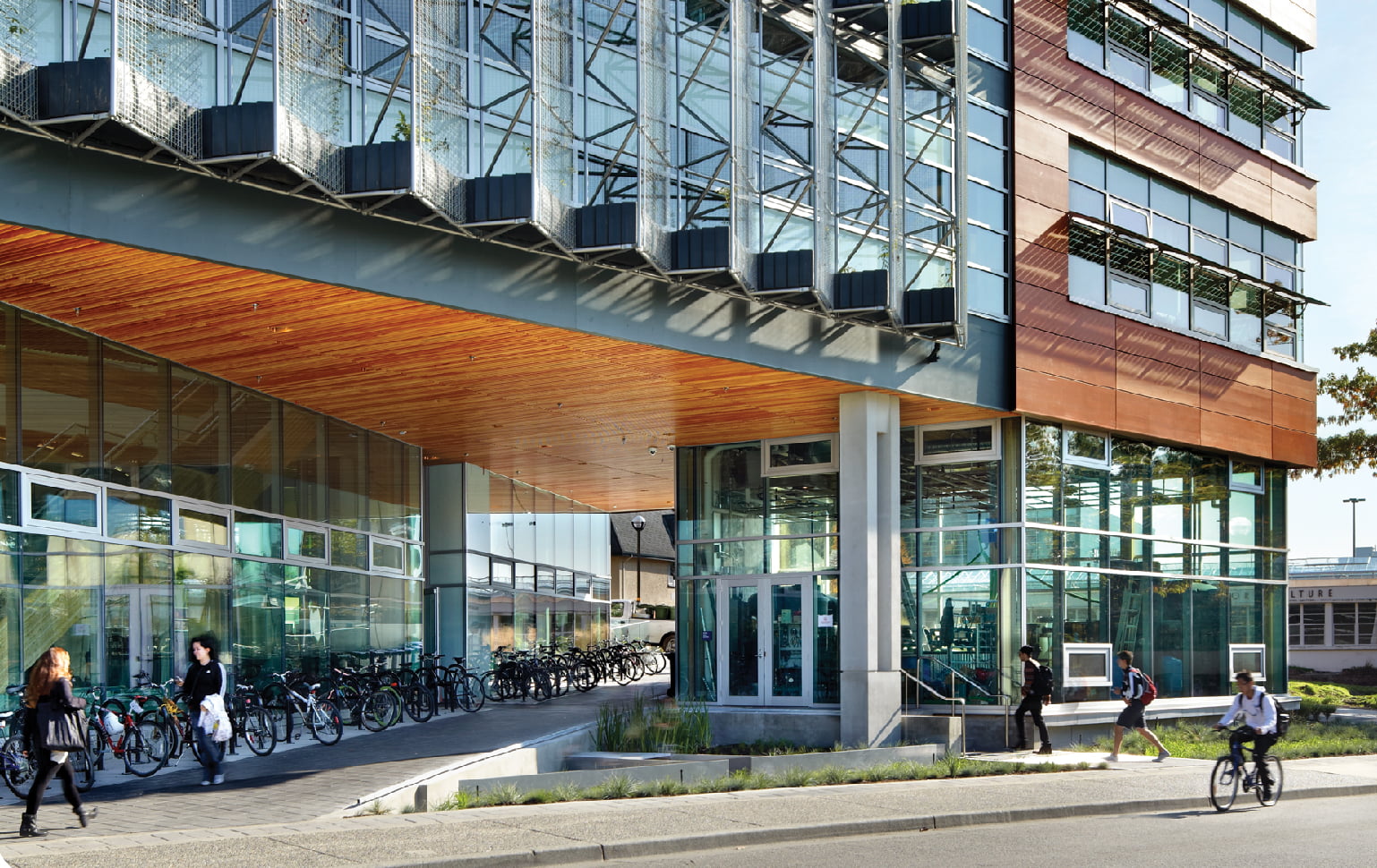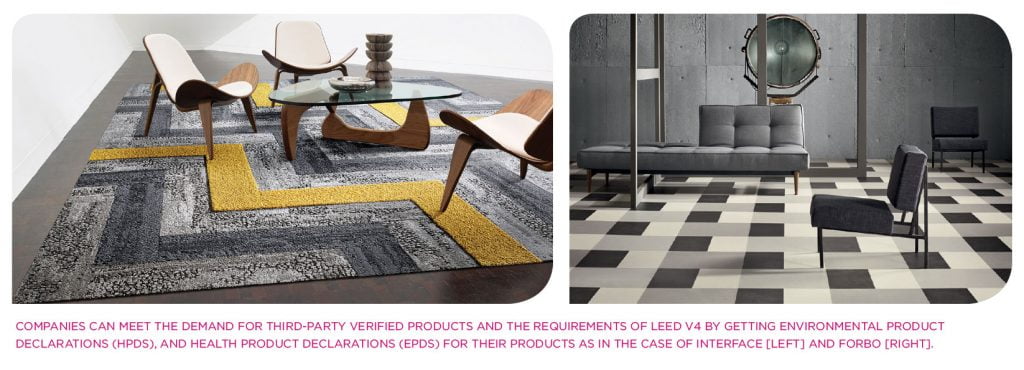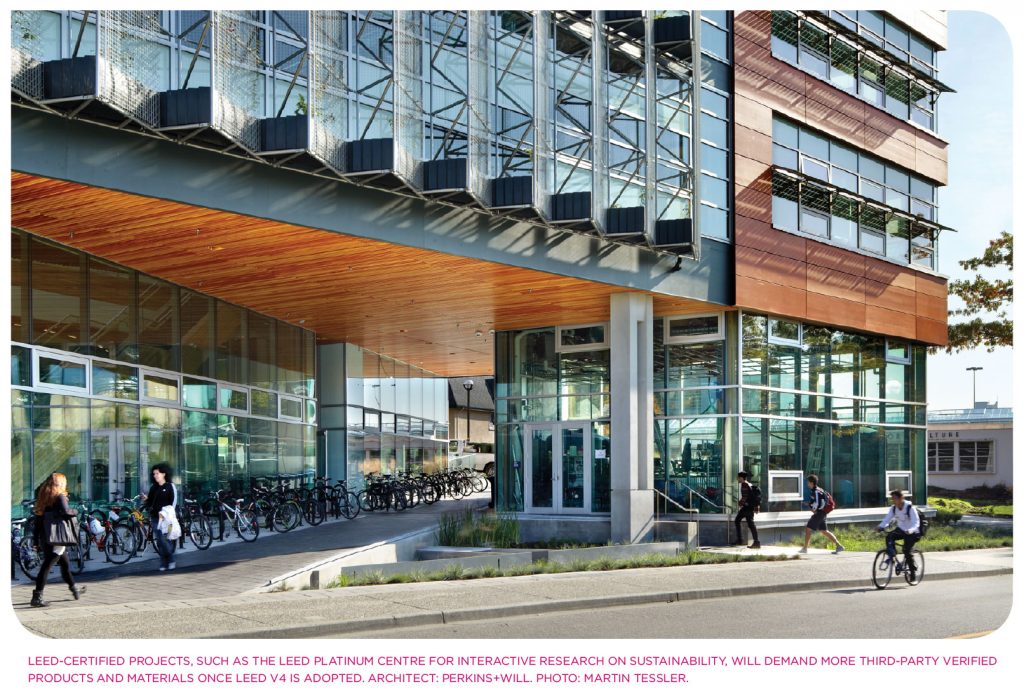In LEED v4 and beyond
As most green building professionals in Canada now know, demand for products and materials with third-party verification is growing, and this trend will continue well into the foreseeable future.
By Mark Hutchinson
The change is being driven in part by programs like LEED and the Living Building Challenge, which are putting greater emphasis on reducing the environmental and health impacts of materials. This is where third party verification comes in, as it is a natural requirement for such programs. The building construction industry is also taking notice and turning to safer, more sustainable options.
Inherent in any significant change is a lag time while the market adapts. However, before the full impact of LEED v4 was even felt last year, the industry was already recognizing the potential. In the CaGBC’s 2014 joint report with McGraw Hill Construction titled Canada Green Building Trends: Benefits Driving the New and Retrofit Market, it was found that 29% of contractors surveyed said they considered the lack of products or solutions available in their market to be one of their top three obstacles to building green. The same survey found that Canadian firms were expecting to grow their green practices from one third in 2014 to one half by 2017.
LEED v4 leading the charge
The good news is that LEED v4 helps provide a framework for understanding and assessing materials. It establishes the broader elements to consider, including impacts on health and the environment, as well as responsible extraction and sourcing.
LEED v4 specifies programs and methods for assessing these elements, and it also provides the market with the time and incentive to evolve, by rewarding the act of simply gathering the information necessary to make informed choices.
For example, the new Building Product Disclosure and Optimization credit for Environmental Product Declarations includes a possible two points for achieving the following:
• Option 1: Environmental Product Declaration [1 Point]. Use at least 20 different permanently installed products sourced from at least five different manufacturers that meet specific disclosure criteria.
• Option 2: Multi-Attribute Optimization [1 Point]. Use products that comply with one of the criteria listed for 50%, by cost, of the total value of permanently installed products in the project.
Mark Hutchinson is Director of Green Building Programs, Canada Green Building Council.
↦ SUBSCRIBE TO THE DIGITAL OR PRINT ISSUE OF SABMAGAZINE FOR THE FULL VERSION OF THIS ARTICLE.



